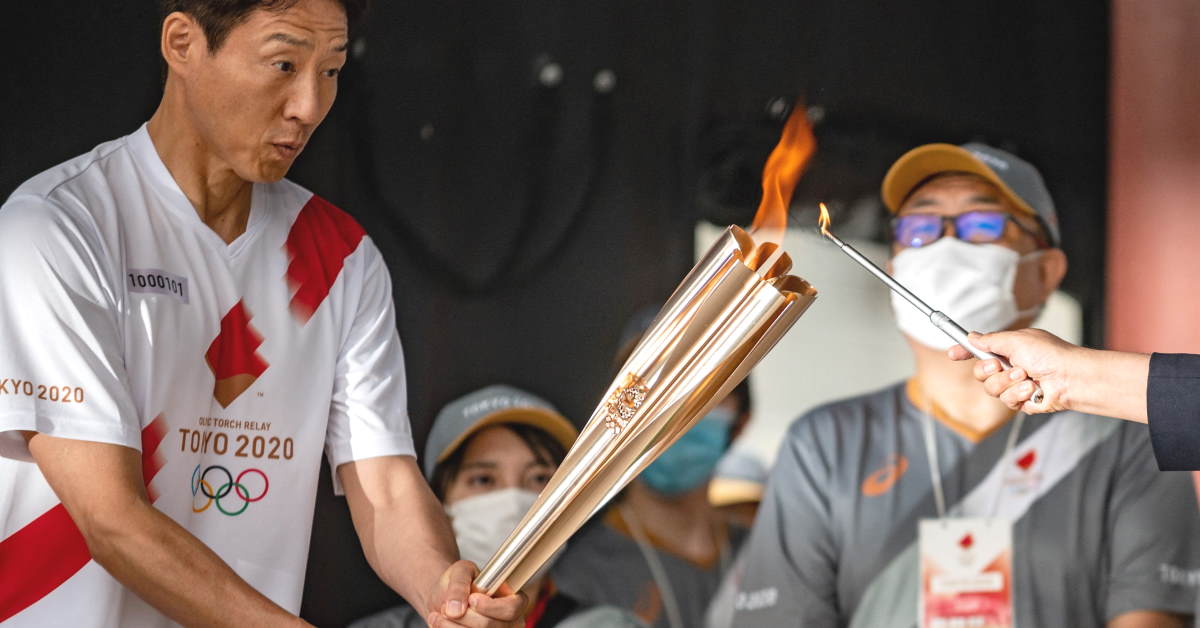With the Tokyo Olympics and Paralympics fast approaching, the Japanese authorities have decided to declare a state of emergency in Tokyo.
The Olympics begin on 23 July, and the Paralympics starts on 24 August but events in the capital will take place without any spectators.
What Is The Situation With Infections In Japan?
New infections across Japan have been slowly edging up since late June.
On 7 July, the Ministry of Health reported 2,182 new cases, up by more than 524 on the previous day.
However, the daily numbers are well down on the figures for May, when at several points, more than 7,000 cases a day were recorded.
How Will COVID Change The Olympics?
Experts have said the daily infection rate in the host city of Tokyo needs to fall below 100 in order to hold the Games safely.
Case numbers did fall from mid-May, going below 400 a day. But that decline has now levelled off and infections are rising again.
On 8 July, the city's health authorities reported 896 new infections, with an average over the past seven days of more than 600 cases a day.
At the peak of infections in May, hospitals in many areas were overwhelmed, with large parts of Japan under a state of emergency, giving the authorities greater powers to enforce restrictions.
In Tokyo, there will be specific measures put in place such as limits on bars and restaurants, when the Games get under way.
Organisers have decided not to allow fans at Olympic events in the capital, and in surrounding areas.
Venues in the Fukushima, Miyagi and Shizuoka regions will be allowed to have a limited number of spectators.
How Many People Have Been Vaccinated?
A mass vaccination campaign was launched in the two biggest cities, Tokyo and Osaka, as infections rose.
But to date, just over 26 percent of the country's population has been vaccinated with at least one dose and about 15 percent have been fully vaccinated.
Most people in United States (US) and Germany have had one dose. And in the United Kingdom (UK), more than 60 percent have.
Japan only started vaccinating people in February, later than most other developed nations.
The Pfizer jab was, for some months, the only approved vaccine in Japan.
This process took longer because Japan insisted on doing its own trials alongside the tests done internationally. Officials say this was done to build confidence in the vaccine, according to the Asahi Shimbun newspaper.
Historical concerns surrounding side effects have contributed to hesitancy towards inoculations in the past.
An Imperial College London study of 15 countries found that Japan had the lowest levels of trust towards the coronavirus vaccines.
The rollout has also been hampered by supply shortages and logistical hurdles.
Japanese law has only permitted doctors and nurses to carry out vaccinations, but the rules have now been relaxed to allow dentists, paramedics and clinical technologists to bolster the vaccine drive.
Since the start of the month, the number of daily jabs has almost doubled – a sign the new approach seems to be working.
Japan has reportedly secured more than 300 million doses of Pfizer, AstraZeneca and Moderna shots (it approved the production and use of the latter two in May), which would be enough to vaccinate the entire population.
What Other Measures Has Japan Taken?
Japan – unlike some other countries – did not enforce strict lockdowns or completely close off its borders as soon as the pandemic hit last year. In April 2020, the government introduced a state of emergency, although the stay-at-home guidelines were voluntary. Non-essential businesses were asked to close, but did not face penalties for not complying.
Restrictions on entry were introduced from some countries, and others were added later.
Although it has a large elderly population and densely-populated urban centres, Japan proved relatively successful in controlling the virus initially, and avoiding high death rates.
There were a number of theories put forward as to why this might have been, including: high public compliance with safety measures such as mask wearing; close physical contact like hugging and kissing is generally avoided; and lower rates of chronic disease like heart conditions, obesity and diabetes.
However, there were outbreaks of the virus throughout 2020 and nationwide, case numbers rose sharply in the latter part of the year and into a peak this January.
At the time, the government faced criticism over a campaign encouraging domestic travel in order to boost the economy.
A state of emergency was declared in Tokyo and nine other regions when case numbers started to rise in April.
Japan now has border restrictions in place – nationals of nearly 160 countries are currently denied entry (unless exceptional circumstances apply). – BBC
